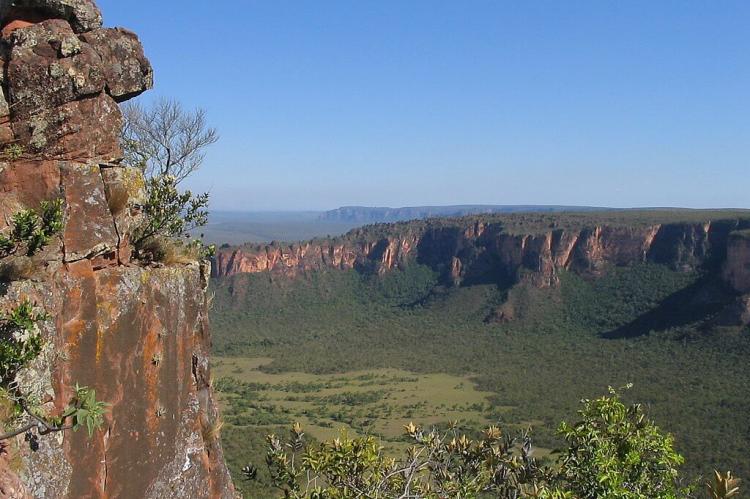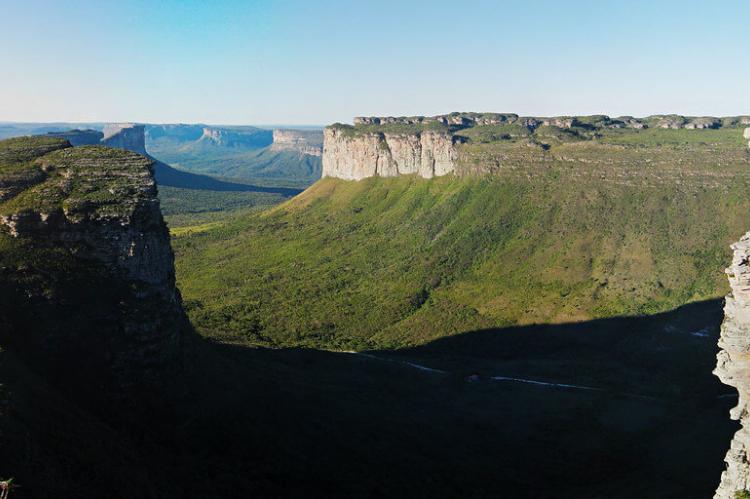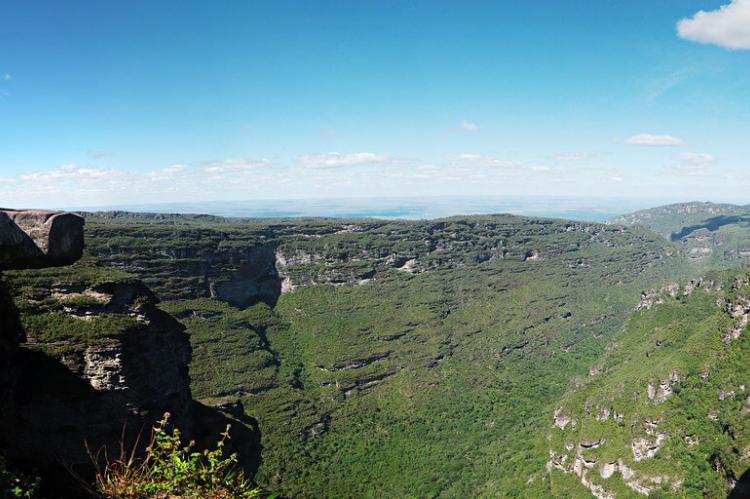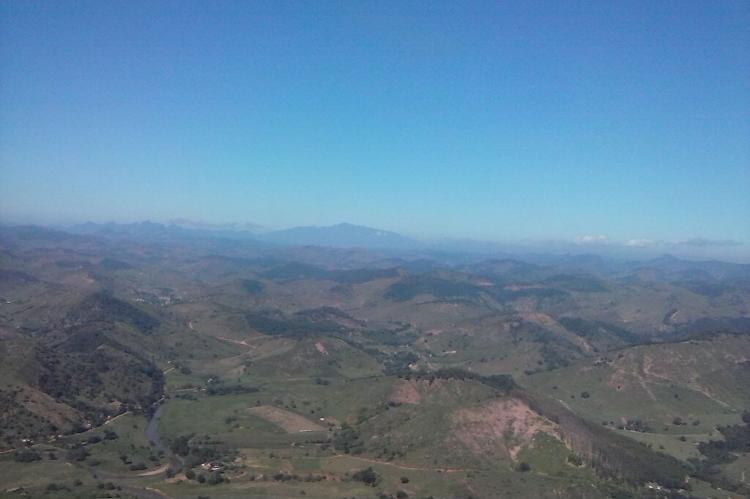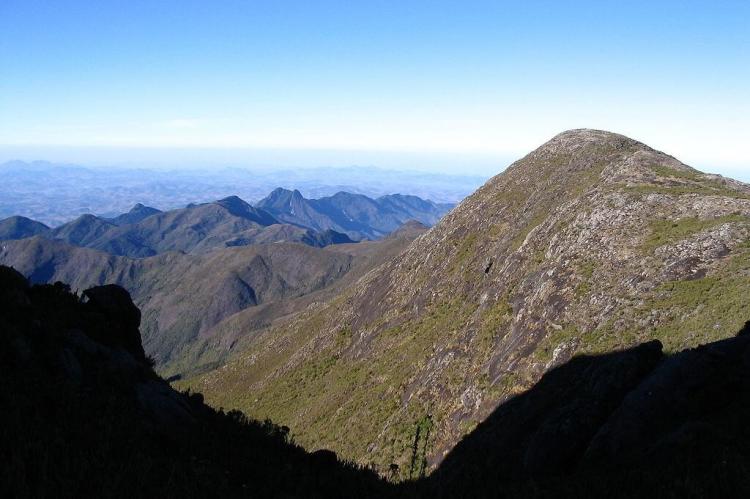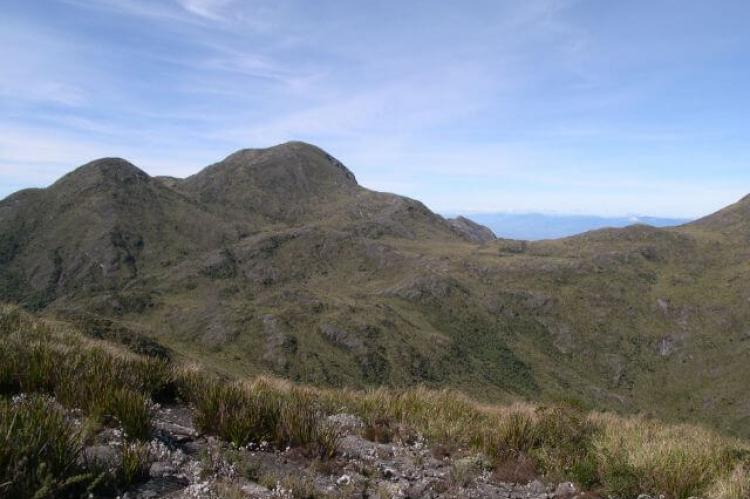The Brazilian Highlands: A Tapestry of Geological Wonders, Biodiversity, and Human Influence
The Brazilian Highlands constitute a vast and captivating region that spans most of Brazil's eastern, southern, and central territories. This extensive highland landscape has been central in shaping Brazil's physical features and physiographic divisions.
The Brazilian Highlands
A Tapestry of Geological Wonders, Biodiversity, and Human Influence
The Brazilian Highlands, also known as the Planalto Central, Brazilian Plateau, or Paraná Plateau, constitute a vast and captivating region that spans most of Brazil's eastern, southern, and central territories. This extensive highland landscape has been central in shaping Brazil's physical features and physiographic divisions.
Geographical Makeup
Encompassing Minas Gerais, São Paulo, Goiás, and Mato Grosso states, the Brazilian Highlands are characterized by rugged features such as cliffs, flat-topped plateaus, ravines, rolling hills, and rock outcrops. This expansive region is the primary source of the nation's abundant mineral wealth, covering around half of Brazil's land area, approximately 4,500,000 square kilometers (1,737,000 square miles).
The Brazilian Highlands significantly impact population distribution, with around 190 million people residing in the highlands or the adjacent narrow coastal region. This concentration of population underscores the highlands' importance as a hub for economic activities and cultural development.
Ancient basaltic lava flows, although now devoid of seismic or volcanic activity, initially shaped the Brazilian Highlands. Erosion has been pivotal, forming extensive sedimentary deposits and sculpting the mountains over time.
Physiographic Divisions
The Brazilian Highlands seamlessly integrate with other physiographic divisions, influencing the lowlands, the Amazon basin, the Pantanal wetlands, and the Atlantic Coastal Plain. This interconnectedness impacts regional climates, river systems, and ecological patterns.
Descending gradually into the lowlands of the Amazon basin, the Brazilian Highlands contribute to the Cerrado biome—a vast tropical savanna with unique flora and fauna. To the west, the highlands border the Pantanal, the world's largest tropical wetland, affecting its drainage patterns and biodiversity.
The eastern edge of the Brazilian Highlands gently slopes towards the Atlantic Coastal Plain, giving rise to significant rivers like the Paraná and São Francisco. This transition zone contributes to the formation of river valleys and basins, shaping the region's hydrography.
Mountain Ranges
The Brazilian Highlands boast an impressive array of mountain ranges, including the Serra da Borborema, Serra do Espinhaço, Serra do Caparaó, Serra da Mantiqueira, Serra do Mar, and Serra Geral. These ranges, along with a massive escarpment along the eastern edge, contribute to the region's varied topography.
A massive escarpment along the eastern edge forms mountain ranges averaging approximately 800 meters (2,600 feet) in elevation, with the highest elevations found in two key areas. The first is a series of ridges less than 500 kilometers (300 miles) from the eastern coast, and the second is in the environs of Brasília and the border dividing Bahia state from Tocantins and Goiás. The highest point is the Pico da Bandeira in the Serra do Caparaó at 2,891 meters (9,485 feet).
Biodiversity
The Brazilian Highlands are celebrated for their incredible diversity, housing several distinct biomes, climatic conditions, and thousands of animal and plant species. Divided into three main areas—Atlantic Plateau, Central Plateau, and Southern Plateau—the highlands exhibit unique ecological characteristics.
Human activities, including agriculture, mining, and cattle ranching, have left a mark on the Central Plateau, which was once covered by cerrado vegetation. Conservation efforts strive to preserve the remaining intact areas and protect the biodiversity within the Brazilian Highlands.
The Three Main Areas of the Brazilian Highlands
The Brazilian Highlands, with their vast expanse and varied topography, are intricately divided into three main areas, each contributing distinct ecological characteristics and crucial to the country's biodiversity. Let's explore the Atlantic Plateau, Central Plateau, and Southern Plateau, unraveling the unique features that define these regions.
-
Atlantic Plateau: The Atlantic Plateau, the largest and most populous of the Highland divisions, extends along Brazil's eastern coast. This region is characterized by a series of mountain ranges, including the iconic Serra do Mar and the majestic Serra da Mantiqueira. The altitude varies, creating a diverse landscape of cliffs, plateaus, and valleys.
Historically covered by the Atlantic Forest, one of the richest areas of biodiversity globally, the Atlantic Plateau has witnessed substantial human impact. Unfortunately, only 7.3% of the original Atlantic Forest remains due to urbanization and agricultural expansion. Conservation efforts strive to protect the remaining fragments, preserving unique flora and fauna.
Home to some of Brazil's largest cities, including Rio de Janeiro and São Paulo, the Atlantic Plateau is a cultural and economic hub. The convergence of urbanization and environmental conservation poses challenges, emphasizing the need for sustainable practices to balance ecological integrity with human development.
-
Central Plateau: Occupying Brazil's interior, the Central Plateau is characterized by a series of plateaus, such as the Mato Grosso Plateau and the Paraná Plateau. This region played a pivotal role in Brazil's agricultural and mining sectors. The cerrado vegetation, once covering approximately 85% of the plateau, is now significantly impacted by human activities.
The Central Plateau is a major agricultural, mining, and cattle ranching center. The expansive Cerrado biome, known for its unique flora and adaptive fauna, has faced challenges due to extensive agricultural practices. Efforts to balance economic interests with environmental conservation are crucial for the sustainable future of this region.
Human impact, including deforestation and land conversion, poses challenges to the Central Plateau's ecological balance. Conservation initiatives aim to address these challenges, promoting sustainable land use and preserving the remaining cerrado areas, fostering biodiversity and ecosystem resilience.
-
Southern Plateau: The Southern Plateau, located in southern Brazil, is characterized by rolling hills and fertile soils. This region exhibits a mix of landscapes, including areas covered by the Atlantic Forest, araucaria highland forest, and Cerrado grasslands. The diverse topography contributes to the agricultural richness of the Southern Plateau.
Renowned as a major center of agriculture and wine production in Brazil, the Southern Plateau benefits from its fertile soils and favorable climate. The cultivation of crops and vineyards has shaped the economic and cultural identity of this region, fostering a connection between the land and its inhabitants.
Similar to other plateau regions, the Southern Plateau faces challenges related to agricultural expansion and land use changes. Balancing the need for agricultural productivity with environmental conservation remains a key consideration for the sustainable development of this vibrant and diverse region.
Conclusion
In conclusion, the Brazilian Highlands emerge as a dynamic region where geological wonders, biodiversity, and human influence intertwine. This region is a testament to the intricate interplay between nature and culture, from the extensive sedimentary deposits and mineral wealth shaping the land to the diverse biomes and unique ecosystems within the highlands. The Brazilian Highlands continue to captivate with their breathtaking landscapes, providing a crucial foundation for Brazil's environmental richness and cultural heritage.
